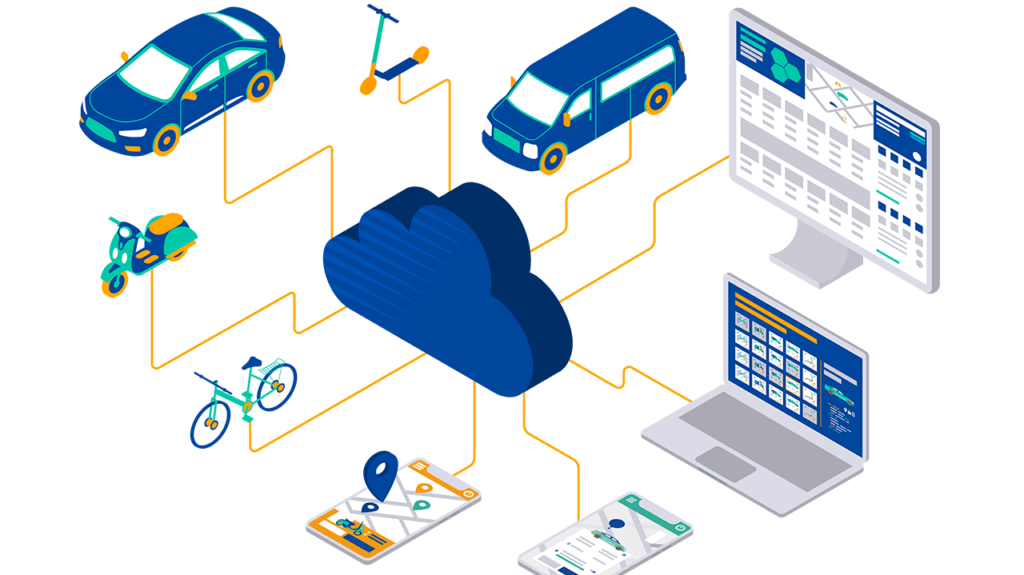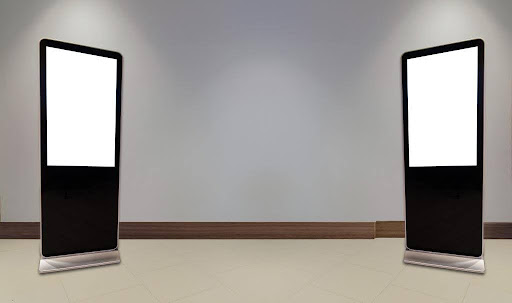Telematics technology, while not brand new, has seen many developments in recent history. Because of this, there has been a drastic transformation in processes for fleet managers and those in the construction and equipment rental industries.
In this article, we’ll cover the basics of telematics and its benefits, specifically for the construction industry and off-road vehicle rental companies. Keep reading if you want to gain a competitive advantage by increasing efficiency, improving fleet management, and eliminating downtime for your company.
Table of Contents
Telematics: A breakdown
Telematics is essentially a putting together of two different technological terms. A hybrid between informatics (the processing of information and creation of information systems) and telecommunications (the distant exchange of information), telematics involves the collection of data and GPS tracking to deliver information about vehicles in real-time.
Telematics is commonly used in fleet management and enables teams to get live data on the status of equipment, including but not limited to geographic location, fuel usage, and engine diagnostics.
How does it work?
While older systems involved analog data transfer, now, with the introduction of cloud storage and wireless sharing, fleet managers can retrieve instant updates right from a mobile smart device. Fleet managers can get real-time data analytics on the status of the individual vehicles in their fleet from anywhere in the world.
With telematics data, fleet managers can make better decisions for their vehicles. Vehicles are connected to the system via a device installed within the individual vehicles. Sensors on this device collect data and send it to the platform, where it is visible to managers and business owners.
Benefits for businesses requiring efficient fleet management
The implementation of telematics provides several benefits for businesses centralized around effective fleet management. Construction and equipment rental companies can greatly benefit from the detailed data this technology provides.
Here’s an overview of some key benefits:
Real-time geo-tracking
Telematics allows fleet managers to monitor vehicles in real-time. With this, managers know where their assets are at all times. This enhances fleet visibility, facilitates effective dispatching, and speeds up reaction time in the event of crises or changes in client needs.
Geo-tracking, a common feature of telematics systems, enables fleet managers to create virtual borders and get notifications when vehicles enter or depart certain zones. Geo-tracking ensures that vehicles remain where they should be and may help prevent unauthorized use or theft.
Vehicle and driver security
Telematics devices can provide significant notifications for tampering, unlawful use, and driving after hours. With vehicle theft at an all-time high in many areas and industries, theft prevention notifications may save companies from huge losses. Immediate notifications allow for quick action and aid authorities in the recovery of stolen vehicles.
Telematics also allows for proactive monitoring of driver behavior, such as abrupt braking, excessive speeding, and idling. Fleet managers may take necessary actions to enhance driver safety and prevent accidents by recognizing dangerous driving patterns.
Monitor fuel usage
Telematics can provide information on fuel usage, idle time, and wasteful routes.
With this, advanced fleet management systems built for connectivity such as Trackunit, can reveal data on idle time to help managers monitor fuel usage. Analyzing data can help construction teams make better decisions for off-road equipment to minimize the wastage of resources.
Fleet managers may drastically cut fuel expenditures by optimizing routes and reducing wasteful idle time.
Dispatching and job management
By automating paperwork, telematics streamlines job management and dispatching. It aids in the organization of customer information, preferred routes, and client feedback.
All necessary information is centralized, boosting efficiency and production. Real-time vehicle monitoring enables better route planning and optimization, resulting in quicker response times and customer satisfaction.
Better visibility and customer service
Telematics allows for real-time tracking of delivery fleets, resulting in faster delivery and improved customer service. Customers can sign up for ETA alerts, which keep them updated on the location and projected arrival time of their vehicles. Improved communication and openness foster confidence and loyalty.
For equipment rental companies specifically, clientele can feel more cared for with the use of telematics. Diagnostics are sent directly to business owners so fleet managers can respond quicker to renter’s needs relating to equipment.
Easy compliance
Telematics aids in compliance with electronic logging device (ELD) rules, which track drivers’ hours of service (HOS). ELDs replace paper logs, decrease administrative costs, and offer reliable data for regulatory compliance.
Furthermore, telematics systems can produce reports on driver hours, distance, and other compliance-related data, streamlining audits and inspections.
Improved maintenance
In addition to tracking location and vehicle activity, telematics systems can provide comprehensive data about vehicle diagnostics. This allows fleet managers to receive updates about which equipment and vehicles need servicing and monitor maintenance progress.
Preventative maintenance helps ensure prompt repairs and fewer breakdowns, minimizing downtime and keeping equipment available for use.
Telematics: The technology of the future is here.
Providing fleet managers with real-time data on their assets has revolutionized the fleet management process and vehicle sector. With countless benefits and improvements in overall operational efficiency, the future of construction and vehicle rental has never looked better.
With incredible features like preventative maintenance, rental companies can now have faster response times to customer concerns and equipment issues, and construction companies can stick to project timelines without worrying about equipment downtime.
As technology improves, it will likely play a huge role in the industry, among others. Invest in the future of your company; get started with telematics today.





